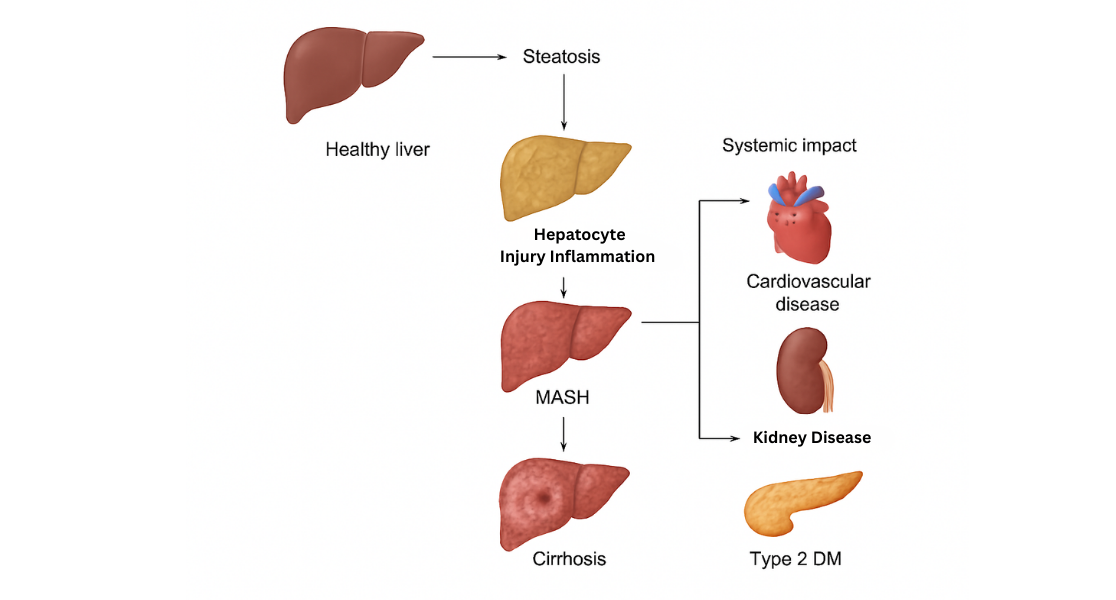Introduction
Abstract
Digital health social networks (DHSNs) are thriving ecosystems for peer support, knowledge exchange, and behavior change across myriad health topics—from smoking cessation to mental wellness. While their user-generated content grows exponentially, participation is far from uniform. A familiar yet striking mathematical phenomenon emerges: power law distributions, where a handful of superusers generate the lion’s share of activity. This article delves into the methods for mapping these heavy-tailed patterns, interprets their significance, and distills practical takeaways for community managers and digital health innovators. By following a reproducible five-step methodology, you can harness these insights to nurture engagement, allocate resources efficiently, and unlock sustainable network growth.
1. The Evolution and Importance of Digital Health Social Networks
Over the past four decades, online health communities have evolved from simple bulletin boards into sophisticated platforms offering real-time support, expert-curated resources, and multimedia capabilities. Key milestones include:
- 1986: Stanford’s Health-Net and the Electronic Information Exchange System introduced early bulletin boards for smoking cessation and mental health support.
- Early 2000s: The advent of web forums and Yahoo! Groups saw tens of thousands of health-specific discussion boards emerge.
- 2010s: Mobile apps and integrated social features enabled on-the-go peer connections and instant notifications.
- 2020s: Data-driven community analytics and personalization algorithms began shaping user experiences in platforms like PatientsLikeMe, HealthUnlocked, and condition-specific Facebook groups.
As these platforms matured, researchers noticed that a small fraction of users—often termed “superusers”—produce most content, drive discussions, and cultivate community norms. Understanding this power law behavior is crucial for anyone seeking to build or manage a DHSN with sustained engagement and real-world health impact.
2. Why Power Laws Matter in DHSNs
Traditional statistical models (e.g., Gaussian distributions) assume most observations cluster around an average. However, many real-world phenomena, including city sizes, word frequencies, and online activity, exhibit heavy-tailed distributions better described by power laws. In DHSNs:
- Few superusers (top 1–5%) generate a disproportionate share (often 80–90%) of posts and interactions.
- Most participants either lurk silently or contribute sparingly, forming the “long tail” of the distribution.
- Engagement dynamics become predictable once the underlying power law parameters (scaling exponent and constant) are estimated.
Recognizing these patterns enables community managers to:
- Identify key influencers critical for sustaining conversation.
- Allocate moderation and support resources where they’re most needed.
- Design features and incentives that amplify superuser impact.
- Forecast growth by modeling how changes in active user counts influence total content.
3. Five-Step Methodology for Mapping Power Laws in DHSNs
To rigorously verify and quantify power law behavior, follow this structured analytic framework. These steps apply to any DHSN with access to user activity logs or database records.
Step 1: Data Extraction and Ranking
Objective: Compile a comprehensive list of all users and their total contribution counts.
- Query your database to extract each user’s unique ID alongside their total posts, comments, or other engagement metrics.
- Create a dataset with two columns: User ID and Activity Count.
- Sort the dataset in descending order of activity count. Assign a rank value to each user—1 for the highest contributor, 2 for the next, and so on.
Outcome: A ranked dataset mapping user positions to their activity levels.
Step 2: Visual Inspection of Skewness
Objective: Confirm the distribution’s heavy-tailed nature before formal modeling.
- Use a scatter plot with Rank on the horizontal axis and Activity Count on the vertical axis.
- Observe whether the data points form a steep initial drop followed by a long tail of low-activity users.
- A pronounced right skew indicates non-normal behavior, suggesting power law or related heavy-tailed models may fit well.
Outcome: Qualitative validation of skewness and potential power law pattern.
Step 3: Parameter Estimation for the Power Curve
Objective: Fit a mathematical power model of the form
y=k×x−βy = k \times x^{-\beta}y=k×x−β
where xxx is user rank, yyy is activity count, kkk is a constant, and β\betaβ is the scaling exponent.
- Transform the model into a linearizable form:
log(y)=log(k)−β log(x)\log(y) = \log(k) – \beta\,\log(x)log(y)=log(k)−βlog(x)
- Perform a simple linear regression of log(y)\log(y)log(y) against log(x)\log(x)log(x) using tools like R, Python, or Excel’s regression functions.
- Extract the slope (–β\betaβ) and intercept (log(k)\log(k)log(k)). Exponentiate the intercept to recover kkk.
Outcome: Numeric estimates of kkk and β\betaβ that define the best-fit power law.
Step 4: Log-Log Trend Line and Fit Quality
Objective: Quantify how well the power model explains variance in activity distribution.
- Re-plot the data on logarithmic axes for both rank and activity count.
- Add the fitted trend line corresponding to your regression model.
- Record the coefficient of determination (R2R^2R2) to assess fit quality. Values above 0.95 indicate an excellent match in many DHSN case studies.
Outcome: A visual and statistical measure of model adequacy.
Step 5: Spearman Rank Correlation
Objective: Validate the monotonic relationship between observed data and model predictions.
- Generate predicted activity counts for each rank using your power law parameters.
- Compute Spearman’s rank correlation coefficient (ρ\rhoρ) between observed counts and predicted values.
- Perform hypothesis testing to ensure statistical significance (commonly P<0.001P < 0.001P<0.001).
Outcome: Confirmation that the model reliably captures the ordering and magnitude of user contributions.
4. Empirical Insights from Landmark DHSN Studies
Researchers applied this five-step framework to four prominent DHSNs—Alcohol Help Center, Depression Center, Panic Center, and Stop Smoking Center—revealing consistent patterns:
- Extreme skewness: The top 1% of users accounted for over 70–85% of total posts.
- High R2R^2R2 values: Power law trend lines explained between 95% and 97.5% of variance across networks of varying size and topic.
- Robust correlations: Spearman’s ρ\rhoρ ranged from 0.97 to 0.99, all highly significant.
- Cross-topic consistency: Whether addressing addiction, depression, panic, or smoking cessation, superuser dynamics followed the same heavy-tailed signature.
These findings underscore a universal principle: superusers are the twin engines of content generation and community cohesion in DHSNs.
5. Practical Takeaways for Community Managers and Entrepreneurs
Harnessing power law insights transforms how you recruit, support, and scale your digital health community. Below are key strategies derived from empirical evidence:
5.1 Identify and Empower Superusers
- Recognition Programs: Award badges, titles, or “superuser” status to your most active contributors. Public acknowledgment fosters pride and sustained involvement.
- Exclusive Access: Offer private forums, early feature previews, or direct communication channels with platform developers.
- Targeted Incentives: Provide tangible rewards—discounts on health products, continuing education credits, or entry into recognition events—to reinforce high-value behaviors.
5.2 Allocate Moderation and Support Strategically
- Workload Forecasting: Use your power model to estimate future posting volumes as your active user base grows.
- Resource Scaling: Prioritize moderator and support staffing around peak superuser activity periods to ensure prompt responses and conflict resolution.
- Automation Tools: Implement AI-driven moderation assistants trained on superuser language patterns to flag off-topic or harmful content swiftly.
5.3 Drive Growth through Superuser Multiplication
- Superuser Recruitment Campaigns: Identify candidates based on real-world expertise—health professionals, patient advocates, or influencer partnerships—and onboard them with specialized training.
- Onboarding Pathways: Design progressive engagement flows that encourage new members to move from lurking to contributing, gradually elevating them up the participation ladder.
- Referral Systems: Encourage superusers to invite peers by offering recruitment rewards, leveraging their networks for community expansion.
5.4 Optimize Platform Features for Maximum Impact
- Thread Pinning & Highlighting: Surface superuser posts prominently to guide community norms and attract new participants.
- Rich Media Support: Encourage multimedia content (videos, infographics, podcasts) from superusers to diversify engagement modes and deepen connections.
- Analytics Dashboards: Equip superusers with personal metrics and community-wide insights so they can tailor their contributions more effectively.
6. Limitations and Cautions
While power law modeling yields powerful guidance, be mindful of these caveats:
- Platform Homogeneity: Many foundational studies analyzed DHSNs operated under similar design paradigms; different UX features or moderation philosophies may yield variant patterns.
- Seasonal and External Effects: Periodic campaigns (e.g., New Year’s health resolutions) or media coverage can temporarily skew contributions, requiring dynamic model adjustments.
- Quality vs. Quantity: Not all posts hold equal value—some spark rich dialogues, while others go unanswered. Future refinements can weight contributions by likes, replies, or time-on-page metrics.
- Outcome Correlations: Mapping participation patterns does not equate to clinical efficacy; integrating health outcome data is essential to connect engagement with real-world benefits.
7. Future Directions: Expanding the Power Law Playbook
Building on the five-step framework, researchers and practitioners can explore:
- Longitudinal Dynamics
Track changes in power law parameters over time to detect community maturation, burnout, or emerging superstar fatigue. - Cross-Platform Validation
Apply methodologies to independently managed health forums, condition-specific apps, and social media groups to test universal applicability. - Superuser Profiling
Investigate demographic, psychographic, and motivational traits of superusers to inform targeted recruitment and retention. - Weighted Heavy-Tailed Models
Integrate engagement quality metrics—such as comment depth, reaction counts, and content propagation—to develop value-based network growth models. - Intervention Impact Analysis
Assess how feature rollouts, incentive shifts, or moderation policy changes influence power law exponents and community health.
8. Conclusion
Power law distributions offer a compelling lens for understanding and managing digital health social networks. By revealing how a select group of superusers underpins most activity, this analytic approach empowers community managers, platform developers, and digital health entrepreneurs to make data-driven decisions:
- Identify the vital few who fuel community life.
- Engage them with recognition, incentives, and specialized features.
- Allocate resources intelligently, focusing on high-value contributors.
- Scale your DHSN by multiplying superuser impact through recruitment and onboarding.
As digital health continues to evolve, harnessing power law insights will be indispensable for creating vibrant, resilient communities that truly support health and well-being. Whether you manage a smoking cessation group, a mental health forum, or any online support network, this five-step methodology provides a robust, reproducible blueprint for unlocking hidden dynamics and ensuring sustained growth and impact.










